 | E-mail to Birds Korea |
 | KWBS |
in the Region
 | The Oriental Bird Club |
 | BirdLife International (Asia) |
March
March often contains a mixture of dry, cold days (with night temperatures down to 3-4°C, and highs between 10 and 15°C) and occasional milder showery, windy weather.
Most wintering species are still present, but in progressively reduced numbers. Falcated Duck regularly display on reservoirs and ponds, while small numbers of Baikal Teal remain at key sites. Migrant cranes peak in the northwest, as does the Ancient Murrelet migration along the east coast. Small numbers of shorebirds, including early Great Knot arrive, plus Siberian Buff-bellied Pipits and the first leucopsis White Wagtails. Hundreds of Rustic Buntings, Dusky and Naumann's Thrushes move north-east out of China and Japan, along with smaller numbers of raptors and occasional influxes of Japanese Waxwing. Bramblings and Siskins often form large flocks at key migration points. Sunny days tempt Rustic, Meadow, and Yellow-throated Buntings into song.
>March highlights are usually found by carefully searching through gull flocks for taxa like Pallas's Gull, barabensis, cachinanns, or smithsonianus, though Korea's first Japanese Accentor was found in March 2001 in Busan, Korea's first Bar-headed Goose on the Han-Imjin in 2003, and early migrant Red-billed Starlings and a Chinese Blackbird in 2004, and in 2006 Korea's eighth Pallas's (Great Black-headed) Gull - a species that seems to be a regular (though very scarce) winter visitor.
(The following records are a compilation of our own sightings and records sent in by other observers. As well as being posted on the Birds Korea website(s), selected records are also forwarded to other Korean-language birding websites; records of threatened species are arranged and forwarded to Birdlife International and national authorities when appropriate; flag images and records are passed to bodies responsible for their coordination throughout the flyway; and all records sent to us are used to compile annual reports and to support the evolving understanding of the status of many of Korea’s birds.)
Our Review of the most-important records of 2003 is online.
The report contains details of hundreds of sightings, and a selection of photographs:
Go to Birds Korea's Review of 2003
Eocheong Island, March 31
Clear and sunny (though still rather poor visibility due to "Yellow Dust" blowing out from the Gobi Desert), with light westerly winds.
Very few birds on the sea crossing, best being 5 Black-legged Kittiwake and 2 Arctic Loon.
On Eocheong itself very low diversity, but excellent views of c 50 naumanni Dusky Thrush (with smaller numbers of eunomus and intergrades) and c 35 Siberian Stonechat. Other birds of note included 4 Red-flanked Bluetail, 1 or 2 singing Korean Bush Warbler and - scarcest of all - (yet) another Chinese Blackbird, heard calling in the evening.
Incheon Bus Terminal, March 30
60 Bohemian Waxwing.
Han-Imjin and Ganghwa Island, March 29
Hazy and largely overcast conditions, with 73 species logged during the day.
At two well-known spots on the Han-Imjin ca 95 White-naped Crane still, along with at least 350 Swan Goose. Other birds of note there included 2 Eurasian Spoonbill, 15 Baikal Teal and probably ca 100 Spotted Redshank (with many too distant to identify certainly).
On Ganghwa, a great range of birds included a few late winterers (including 5 Falcated Duck, 5 Ruddy Shelduck, and a single Smew), and several early spring arrivals. Spring birds here on the tidal-flats included at least 90 breeding-plumaged Saunders's Gull (wintering locally in very small numbers, the species is actually commoner at Ganghwa on passage and in some years summer), at least 250 Far Eastern Curlew, a single Bar-tailed Godwit, and the day's outstanding highlight, 4 early-returning Black-faced Spoonbill, showing a range from full-breeding, with intense yellow-ochre breast band and nuchal plumes, to rather plainer non-breeding plumage (NB: 12 had been recorded on the Han estuary the previous day, the very first of the returning breeding population).
In rice-fields, woodland and other habitats, 3 Mandarin Duck, 10 more Spotted Redshank, 2 early Intermediate Egret, a single Common Kingfisher, a female Japanese Lesser Sparrowhawk, 2 more Hoopoe, 2 Grey Wagtail and a single male Pale Thrush: the last especially watched excellently and at close range.
Seosan Lake A and Taean coast, March 28
An excellent day with warm, still conditions and c 77 species logged, including several highly memorable moments.
At Lake A, only 2 Baikal Teal and 3 Falcated Duck, but 5 Garganey fresh in. An outstanding 30-minute spell of birding next to the sandy islands in the SE corner then included a fly-by first winter Relict Gull with c 400 Black-headed Gulls (a very late date, and of course presumed the first record of Relict Gull in the Seosan area), followed by prolonged views of a roosting, fully-hooded Saunders's Gull and a group of 5 Far Eastern Curlew: all watched to the backdrop of several hundred Greater White-fronted and Bean Geese (mostly serrirsotris with several Taiga Beans mixed in) and 3 noisily displaying osculans Oystercatcher. Believing the birding could not get much better, a group of 7 adult Lesser White-fronted Goose then landed on the lake in front of us, only to be flushed by an immature Upland Buzzard that was itself immediately swooped at by a patrolling Common Buzzard!
During the day, at the very least 4 more Lesser White-fronted Geese were found, suggesting a conservative total of 11 for the day: very likely a new national high count, and further evidence of small but regular migration of the species through Korea, presumably to and from the core wintering area in the Yangtze River floodplain in China.
Other highlights at Seosan included excellent views of 6 Chinese Penduline Tit, a (second-year) Greater Spotted Eagle moving north, a total of 3 Upland Buzzard, and at least 42 Hooded Crane (including one large, pale Hooded x Common Crane hybrid, perhaps suggesting that these were birds that had wintered at Suncheon?).
Limited time spent towards the coast still allowed time to find Hoopoe, and several small flocks of Brambling, Dusky Thrush and Yellow-throated Bunting.
Gunsan area, March 28
As others, we noted the return of Bar-tailed Godwits and Great Knots to the mud flats around Kunsan.
On the 27th I noted a Red-flanked Bluetail, but we could not locate it on the 28th.
Danyang, Chungbuk-do, March 26 - 28
March 28: Pair of Mandarin Duck - meaning at least 5 present over the weekend. The buntings were found on Daeseong-San at much higher elevation than before with at least 25 Yellow-throated and 40 Rustic Buntings present. No Meadow Buntings anywhere - even though they were present throughout the winter near the river.
March 27: 3 female and 6 male Tufted Duck, 4 male Mandarin Duck and a Common Gull. All buntings gone from the river area where they had been abundant through the winter.
March 26: AM Courtship display of leucopsis White Wagtails - very interesting! PM Eurasian Hoopoe - photos taken.
Han estuary, March 28
12 Black-faced Spoonbill.
Taean Peninsula, March 27
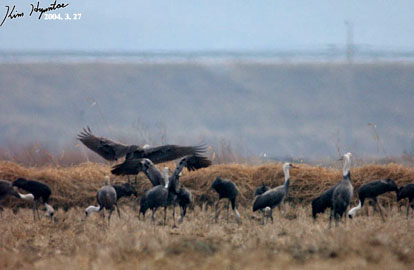
53 Hooded Crane.
Socheong Island and ferry back to Incheon, March 26
Even warmer, with temperatures likely reaching 15C. In the morning, more evidence of an exodus of migrants, with only slightly increased numbers of Rustic Bunting (up to c 40), and single Pallas's Reed, Little and (suprisingly) personata Black-faced Bunting. In addition, there were still 5 Long-tailed Rosefinch (including one goregous male), 5 Siberian Accentor and 2 newly-arrived Siberian Stonechat.
From the ferry, only a single Streaked Shearwater, but increasd numbers of Black-tailed Gull (many obviously paired up) and 6 Ancient Murrelet.
Socheong Island, March 25
With clear conditions, light NW winds and temperatures reaching a comparatively balmy 12C, some migrants had obviously moved on, with numbers of most species rather down on those of the 24th. Birds of note on the land included 2 Upland Buzzard, 8 Siberian Accentor, 5 Red-flanked Bluetail, 2 Long-tailed and 3 Pallas's Rosefinch still, and a single overfly Bullfinch.
Offshore, calm and clear conditions allowed for more thorough checking, revealing 7 Black and 25 White-winged Scoters, 2 Red-throated and 2 Arcti.
Loon and what appeared to be at least 2-3 extremely distant Yellow-billed Loons (the distance prevented firm identification).
Socheong Island, March 24
Light overnight rain showers gave way to another sunny, cool, and largely clear day, with light northwesterly winds.
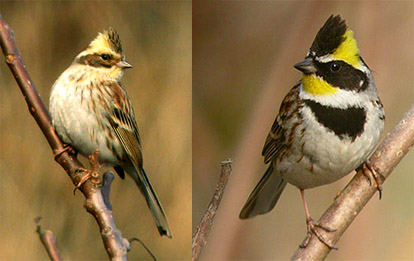
Diversity remains relatively low, with only 47 species logged, but numbers were much improved on yesterday, with e.g. up to 200 ,Grey Starling, 200+ Yellow-throated Bunting, 10 Long-tailed Rosefinch and c 75 naumanni Dusky Thrush. The sea also provided some interest with 5 Black and 20 White-winged Scoters, 4 Streaked Shearwater and a single Red-throated Loon.
Among other highlights were a probable first year female Dark-throated Thrush (of subspecies atrogularis), a male Red-billed Starling and the spring's first Siberian Stonechat.
Socheong Island, March 23
Continuing sunny and cool, with a light southwesterly wind and visibility at less than 5 km.
Although diversity remains expectedly low (with the spring peak in migration still one month away), species of note included 2 more Upland Buzzard, c 40 Meadow Bunting (all but one of them male), and 96 Streaked Shearwater off the island in the evening.
Socheong Island, March 22
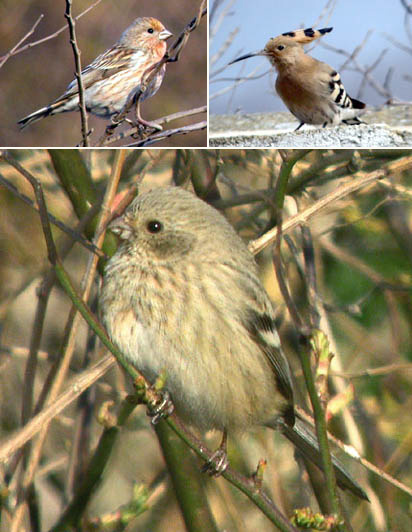
Photos © Nial Moores
A quick visit to Socheong to check on early migrants and the "state of construction". From the ferry rather few birds, with best being only single Red-throated Loon, Black-legged Kittiwake and Black Scoter, and some evidence of migration by Black-tailed Gull.
On the island itself, in clear sunshine with temperatures reaching ca 11 C at best, single White-tailed Eagle and Pacific Swift, 2 Hoopoe, ca 8 Long-tailed and at least 4 Pallas's Rosefinches. Highlights, however, were 2 more Chinese Blackbird and a calling Yellow-browed Warbler, the latter still considered rather more likely to have overwintered locally than to be a spring migrant.
Chungju, x river and lakes
The last couple have weeks have seen some bird movements. After the heavy snowfalls early this month, weather has been a bit warmer and the ice and snow have all gone.
On March 7th there were 4 Common Snipe, a Northern Lapwing and 2 Long-billed Plover in a small area free of snow along Dal Cheon. Some parts of Dal Cheon were covered by a thin layer of ice and the ducks were found in the lower section of the river, wide-spread in open water. Total count of ducks was around 530 from 12 species.
Partial surveys since March 7th have found Little Egrets on March 14th and 21st. 11 Mandarin Duck and a Eurasian Sparrowhawk on March 21st. Mallards have significantly reduced in numbers: 9 species of ducks were recorded there today. 2 Meadow Bunting were seen along Dal Cheon today.
A flock of 14 Whooper Swan were last seen at Daejeji on March 10 and were seen flying away that day. In the last two weeks Mandarin Ducks have been seen at Daejeji, 3 on March10th, 7 on March 14th, 2 on March 17th and 15 on March 20th. In the last two days there have been fishermen around Daejeji so most of the birds had moved elsewhere.
At Hoamji the number of Spot-billed Duck has decreased from over 70 on March 13th down to less than 15. Two flocks of Bean Geese were seen heading in a generally northerly direction: 70 on March 7th and 40 on March 20th.
Around Chungju, passerines have seen a few changes: Dusky Thrush numbers have increased, White Wagtails have been seen in several locations, Great Tits are more visible, a Hawfinch has been seen on a number of occasions, and Grey Starlings are being seen more frequently.
Han-Imjin and Cheorwon, March 21
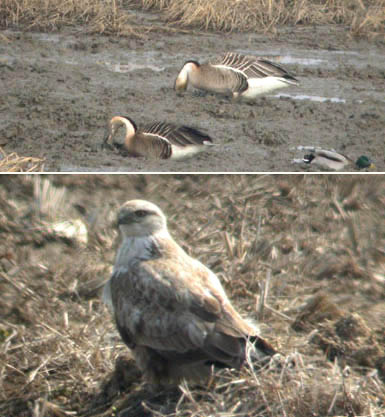
In total, about 200 Cinereous Vulture were seen during the day, at 3 or 4 locations. ca 500 Swan Goose were also seen in two quick road stops at the Han-Imjin, along with ca 75 White-naped Crane, with a further 200 White-napeds also seen at Cheorwon (several excellently). Although 2 Red-crowned Cranes were found by other birders at Cheorwon that morning, we happily settled instead for another Upland Buzzard (a smallish dark-phase type), a (staggering) single flock of about 1000 Rustic Bunting, and excellent but brief views of an Amur Leopard Cat.
Near Munsan, a single Long-billed Plover was present on the river, along with 2 Little Ringed Plover, and a single group of 11 Siberian Accentor were warched well in the riverside vegetation.
Seosan lakes and Taean Peninsula, March 20
85 species logged, including at Seosan 20 Eurasian Spoonbill, an adult Lesser White-fronted Goose (apparently the same one that was found and photographed independently by Kim Hyun-tae), only 6 Baikal Teal and 5 Saunders's Gull, but 5 Far Eastern Curlew and 1 Bar-tailed Godwit (the latter both clear signs of spring). In addition, 31 Hooded Crane were seen in the evening, while there were also 2 Upland Buzzard found (one adult and one immature). Nearby at the coast, a search for a few early spring migrants turned up another Upland Buzzard, fair numbers of Rustic (50) and Yellow-throated Buntings (20), and most surprising of all 2 Chinese Blackbird: only about the third mainland record known to Birds Korea, and, along with Park Jong Gil's record from Hong Island today (see below), the first of this year.
Gunsan Eunpa Park, Geum and Man-gyeong River, March 21
Both yesterday and today a Red-throated Diver has been on the Lake in Eunpa Park. It was disturbed a couple of times by a motor boat but returned to allow some good views. Baikal Teal remain in the tens of thousands on the Keum River. A Black-necked Grebe was seen, along with a Eurasian Wigeon which was a little unusual for there as well. On the old saltpans there was also Eurasian Wigeon, many Shovelers, a few Pintails, and a duck with the body shape of a Mallard, the upper neck of a male Pintail, the breast of a Mallard and white flank nearest the tail coverts as in Pintail: at a guess, a hybrid Pintail x Mallard.
Sadly, the famous Okku salt pans are now being destroyed to make way for a shrimping aquaculture operation, though there were five White Spoonbills out on the mud today. The Keum seemed to be host to all of the White-fronted Geese in the area while the rice fields near the Man-gyeong handled the Tundra Beans.
Hong Island, March 20
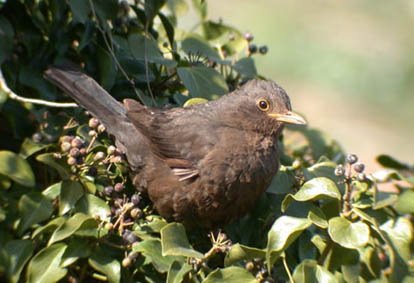
A Chinese Blackbird: seen on the same day as two at Seosan by NM (see above).
Seosan, March 20
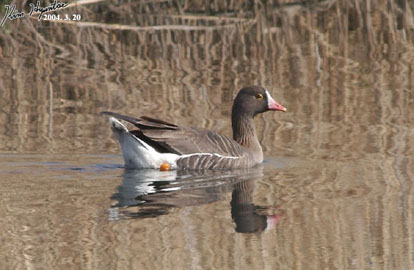
Excellent images of an adult Lesser White-fronted Goose taken at Seosan today are on Hyun-tae's great website.
Nakdong estuary eastern flankM, arch 18
Extremely poor, with very few species seen. The only species of note was a single first winter Relict Gull still.
Socheon (near the DMZ), March 14
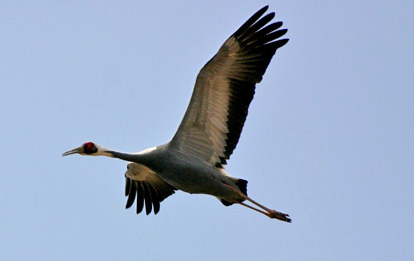
About 50 White-naped Crane seen.
Gunsan, Geum River Estuary and the Mangyeong area, March 14
The foggy morning made us decide to seek birds we could view close up. We were happy to find a few Pallas's Rosefinch in Eunpa Park. At the Keum river the fog persisted however we did see a few Whooper Swan up river and both Red-breasted and Common Mergansers near the dam.
The Mangyeong Estuary was host to a group of 24 Spotted Redshank, a very large group of perhaps 5000 Greater White-fronted Geese and a single Tundra Bean Goose.
Jeju Island, March 11
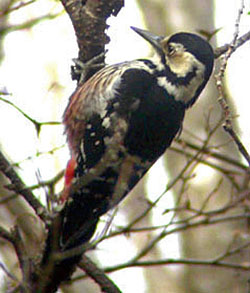
In beautiful spring-like weather (with a high of 17 C), more evidence of spring came in the form of ca 500 Streaked Shearwater moving south off the east coast in less than an hour, a Japanese Lesser Sparrowhawk apparently flying in off the sea, 3 more Barn Swallow and another Pacific Swift. Other species of note seen included a single Eurasian Spoonbill and at least 5 Pacific Reef Egret, good numbers of gulls (including at least 30 adult taimyrensis), 3 Cinereous Vulture, and in woodland on Mt. Halla, 2 White-backed Woodpecker and 2 Scaly Thrush.
Nakdong estuary am, Jeju Island north and east coasts, pm, March 10
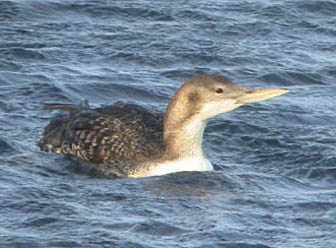
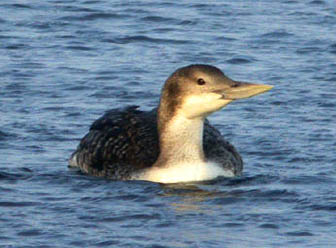
An excellent day, with many highlights among the 76 or so species logged. Although there were very few birds on the Nakdong, with best being ca 10 Eurasian Spoonbill a single Osprey and 60 Whooper Swan still, nearby woodland at Dadaepo held a single Yellow-browed/Inornate Warbler, watched excellently for about 30 seconds at close range in a mixed flock of Varied Tit and Japanese White-eye. Although a very common migrant to south Korea, arriving in spring from about April 25th, this is quite likely the first ever March record of Yellow-browed in Korea: rather more likely an over-wintering than an early-arriving individual.
In addition, close to the airport, ca 30 Japanese and 14 Bohemian Waxwing were watched well, feeding on berries in the central road divide.
Only three hours of birding time remained after the short flight to Jeju, where temperatures were decidedly more spring-like, but highlights came thick and fast. Small groups of White-cheeked Starling contained one Common Starling and one hybrid Red-billed-White-cheeked (with a brown cast to the plumage, a largely whitish head, speckled darker to the rear, and a clear white patch on the primary coverts of the closed wing), while at least 20 Barn Swallow were logged, with one group also containing a single Asian House Martin (presumably the earliest ever spring record in South Korea, or possibly an also over-wintering individual?).
Other signs of spring included a single Pacific Swift (PV only), and 2 Far Eastern Curlew at Seongsan Po, while highlights left over from the winter included 4 Black Brant, 14 Black-faced Spoonbill (giving excellent views) and in a Korean context, best of all an extremely confiding Yellow-billed Loon: present since at least February, this infrequently recorded species gave prolonged views, at best down to only 40 or 50 m or so.
Seosan, March 9
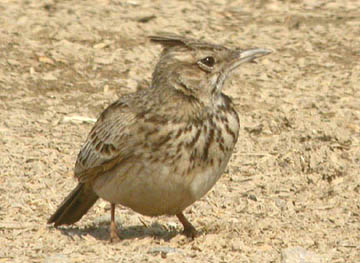
79 species were logged, with a good range of wintering waterbirds, including 23 Eurasian Spoonbill, 45 Whooper Swan, 2 Falcated Duck, and ca 1500 Baikal Teal. Other birds of note included single Long-billed and Little Ringed Plovers, no less than 13 osculans Oystercatcher, Common Greenshank and Spotted Redshank both heard, 3 Saunders's Gull (two in stunning full-breeding plumage), and excellent views of a pair of Crested Lark. In addition, we also had prolonged views of an Amur Leopard Cat, drying and cleaning itself above a rice-field irrigation channel.
Cheorwon Basin and Han-Imjin, March 8
Near freezing temperatures overnight, with much snow left after the record-breaking snowstorm of the last week. At Cheorwon, still ca 200 Cinereous Vulture, and single White-tailed Eagle and sub-adult Upland Buzzard, along with ca 36 Red-crowned and at least 200 White-naped Cranes. Closer to Pocheon, 2 Long-billed and a single Little Ringed Plover were on a stretch of river, along with a single drake Mandarin, 2 leucopsis White and 2 Japanese Wagtail, with cover nearby holding several Siberian Accentor, Meadow Bunting, 10 Hawfinch and ca 30 Rustic Bunting. On the Han-Imjin, brief views of the river produced ca 1 000 Swan Goose, a single Eurasian Spoonbill and ca 600 more White-naped Crane, while at least 13 Daurian Jackdaw were mixed in with a flock of several hundred pastinator Rook next to the expressway at Gimpo.
Baikal Teal Count, March 7
Asan Bay (Pyungtak Lake): 70,000
Seoam Reservoir, near Seosan: 6,500
Daeho Dike: 140
Seosan A: 1500
Seokmun Lake: 14
Seoul, March 7
HAN RIVER am. (Eunbong). After recent spring weather today was cold and snow covered: presumably the last bite of winter...Fair numbers of duck still in residence, mostly Common Teal and Northern Pintail, with some Gadwall still present. A similar story at Seongnae - but with a single Tufted Duck, around 10 Greater Scaup, and also a lone Coot - first time I've seen one on the Hangang. Also the first Black-crowned Night Heron recorded in a few months at least.
SONGDO (Pm). A similar variety of ducks, with 3 Dusky Thrush still present. 42 Saunders's Gull were arrayed in their summer finery, jet black hoods with pretty white eye-rings and red gapes. Little else of note - but a party of 7 Olive-backed Pipits were seen moving through.
Gunsan, Geum and Mangyeong river area, March 7
It was easy to tell today that birds are on the move and preparing for breeding. The drumming of a Great-spotted Woodpecker was heard during the morning near Kunsan. Rustic Buntings were abundant today in all locations. I recorded my first leucopsis White Wagtail yesterday. Today they were sighted at several places in small flocks, in one case along side Buff-bellied Pipits.
Baikal Teal are reduced to a mere few thousand birds on the Keum River. Whooper Swans seem to have disappeared along with the Northern Shoveler that seemed so common just last week. Japanese Quail were flushed at three locations in Okku. Kentish and Mongolian Sand Plovers have arrived. Far Eastern Curlews have appeared also. We counted 15 confirmed with more probably further out in poor light on the mud flats. Saunders's Gulls seem to be still numerous at the Mangyeong estuary. A single Spotted Redshank was seen there too. The Okku reservoir had scores of Great-crested Grebes, many of them in their stunning breeding plumage.
A much more pleasant day than last Sunday resulting in a 71 species day list.
Chungju, x lake and river, March 2
The ice has gone from the lakes and rivers around Chungju.
Daejeji had 14 Whooper Swan, 126 Mallard, 61 Spot-billed Duck, 21 Common Merganser, 3 Smew and 2 Little Grebe on Sunday 29th February.
Waterbirds are wide spread along Dal Cheon: over 970 ducks of 12 species. Most abundant were Mallard, Spot-billed Duck, Pochard and Tufted Duck. There were 8 Mandarin Duck. Raptors included 1 Common Buzzard, 1 Common Kestrel and 2 White-tailed Eagle. Other species of interest were 2 Green Sandpipers, 7 alba Wagtail and a single Meadow Bunting. I assume that the ducks have dispersed now that the ice has gone reducing the total count.
There was a Great Crested Grebe in the Nam Han river on the same day.
Gangnung, March 1
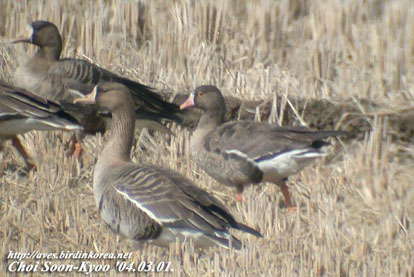
Greater White-fronts (left), Photo © CHOI Soon Kyoo
1 adult Lesser White-fronted Goose.
Seosan, March 1
23 Hooded Crane, and 3 Oriental White Stork still present.
Mangyeong River, March 1
2 Barn Swallow seen - either among very early spring arrivals or survivors through the winter. A Barn Swallow also reported from Jeju Island.





